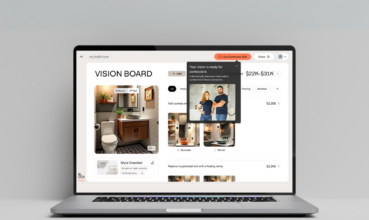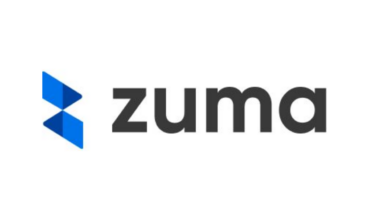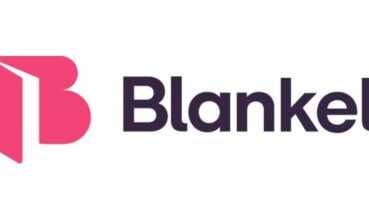Sean Landsberg’s journey from property management executive to PropTech founder illustrates the power of solving real operational challenges. As the CEO of AppWork, Landsberg has evolv...
Mom and Pop Real Estate Investors Adopt Digital Solutions for Competitive Edge




“Technology adoption in real estate operations has been traditionally slow, so you have to make it so easy that anyone can do it,” explains Tiffany Mittal, Founder and CEO of Utility Ranger. This insight captures the central challenge facing small-scale real estate investors who collectively control approximately half of America’s rental housing stock.
The Hidden Giants of Real Estate
While institutional investors dominate headlines, a significant segment of the market operates with far less visibility but substantial collective impact.
“There’s about 30 million apartment units in the United States, and about half of those are owned by mom and pop investors,” Mittal explains. These millions of small-scale landlords manage portfolios ranging from a single unit to several dozen properties, often while balancing other careers and responsibilities.
Despite their collective market power, these investors have historically been underserved by technology providers. “Most people don’t go after this subset of the market because it’s really fragmented,” notes Mittal. This fragmentation creates both challenges and opportunities as smaller investors navigate the digital landscape.
Technology Adoption Challenges
The hesitancy among smaller landlords to embrace new technologies stems from several factors: cost concerns, perceived complexity, and the inertia of established routines. However, this resistance is diminishing as user-friendly, affordable solutions emerge.
Property management software can potentially save landlords thousands annually through improved efficiency and reduced vacancy rates—a significant return on investment for operators with tight margins.
The pandemic accelerated this shift, forcing even the most technology-resistant property owners to find remote solutions for showing properties, signing leases, and collecting rent. What began as emergency adaptations have increasingly become standard operating procedures.
Meeting Modern Tenant Expectations
Today’s renters expect digital experiences throughout their housing journey. Recent surveys indicate that over three-quarters of renters prefer paying rent online, a preference that extends across demographic groups.
“Our tenants were wasteful, and we had leaks that no one was reporting,” Mittal recalls from her own experience as a property owner. This observation highlights how technology can address operational challenges while simultaneously improving tenant satisfaction.
The most successful small investors recognize that meeting these expectations isn’t just about tenant satisfaction—it’s about competitive advantage. Properties offering seamless digital experiences often command premium rents and experience lower vacancy rates.
The Essential Digital Toolkit
For mom and pop investors, technology adoption typically follows a predictable pattern, beginning with the most immediate pain points:
Digital Leasing and Documentation
Electronic signature platforms have become gateway technology for many small landlords, reducing paperwork while accelerating the leasing process.
Financial Management and Rent Collection
Online payment platforms reduce late payments while providing automatic record-keeping that simplifies tax preparation and financial analysis.
Utility and Expense Management
Specialized solutions like Mittal’s platform address specific operational challenges. “Part of our acquisition strategy when we buy properties is, are those properties billing for utilities today? Because if they’re not, we know we can buy that property instantly, start billing them for utilities, and create value on the property with no money out of pocket,” she explains.
Property Maintenance Systems
Digital maintenance request systems improve response times while creating documentation trails that protect both landlords and tenants.
Reaching the Fragmented Market
Despite the clear benefits, reaching this fragmented market with information about available solutions remains challenging. Traditional industry events often miss the mark.
“Many operators don’t have time to attend Apartment Association trade shows, but they do listen to podcasts on the way to their properties,” Mittal observes. This insight highlights the importance of meeting small investors where they are—often consuming educational content during brief intervals in their busy schedules.
Social media communities, podcasts, and online forums have become crucial channels for technology education among this demographic, with peer recommendations carrying particular weight.
From Cost Center to Profit Center
Perhaps the most significant shift is the evolution of technology from a necessary expense to a strategic investment. Forward-thinking property managers are discovering new revenue opportunities through technology integration.
“One of our clients is seeing this more as a profit center. The property management company is now going to be taking this in-house as an in-house operation,” Mittal notes. This represents a fundamental shift in how smaller operators view technology—not just as a cost of doing business, but as a potential competitive advantage.
This perspective is particularly valuable as traditional revenue models face pressure. “Property management fees are starting to get commoditized. How do I drive revenue and centralize my operations?” Mittal asks, articulating the strategic questions facing many in the industry.
The Authenticity Advantage
Small investors often bring a unique perspective to technology adoption because they’re simultaneously users and providers of housing services. “I think inherently that gives me credibility, because I’m doing what I’m saying,” Mittal reflects on her dual role as software provider and property investor.
This authenticity creates natural opportunities for technology providers who understand the unique challenges of smaller portfolios. Solutions designed specifically for this market segment—with appropriate pricing models, simplified interfaces, and focused functionality—are finding receptive audiences.
The Digital Advantage
As technology continues to evolve, the barriers to adoption for smaller investors will likely continue to fall. Cloud-based solutions with subscription pricing models have eliminated many of the upfront costs that previously made advanced property management systems inaccessible to all but the largest operators.
For mom and pop investors, embracing technology isn’t just about keeping pace—it’s about leveraging digital tools to compete effectively with institutional players despite having fewer resources. As Mittal’s experience suggests, the right technology at the right time can help convert operational challenges into strategic advantages.
The most successful small operators will be those who balance the personal touch that has always been their strength with the efficiency that technology enables. For the millions of mom and pop investors who collectively shape America’s rental housing experience, digital tools are becoming essential to their continued success.
Similar Articles
Explore similar articles from Our Team of Experts.


After executing more than 50 deals over his 20-year career in mergers and acquisitions, Jan Tomaszewski was frustrated by an industry truth that most professionals accept as inevitable: comp...


In an industry where miscommunication and mistrust often define the relationship between homeowners and contractors, Block Renovation is creating a paradigm shift. Led by CEO Julie Kheyfets,...


When the COVID-19 pandemic hit in early 2020, Shiv Gettu and his co-founder Kendrick Bradley watched their thriving short-term rental business collapse virtually overnight. Within five days,...
VergeSense has redefined workplace analytics in an industry long limited to manual studies and badge swipes. Their remarkable growth – now powering decisions for over 200 global enterp...




